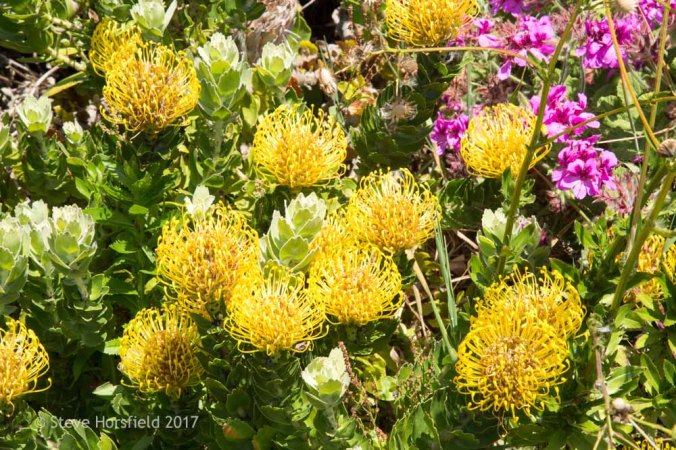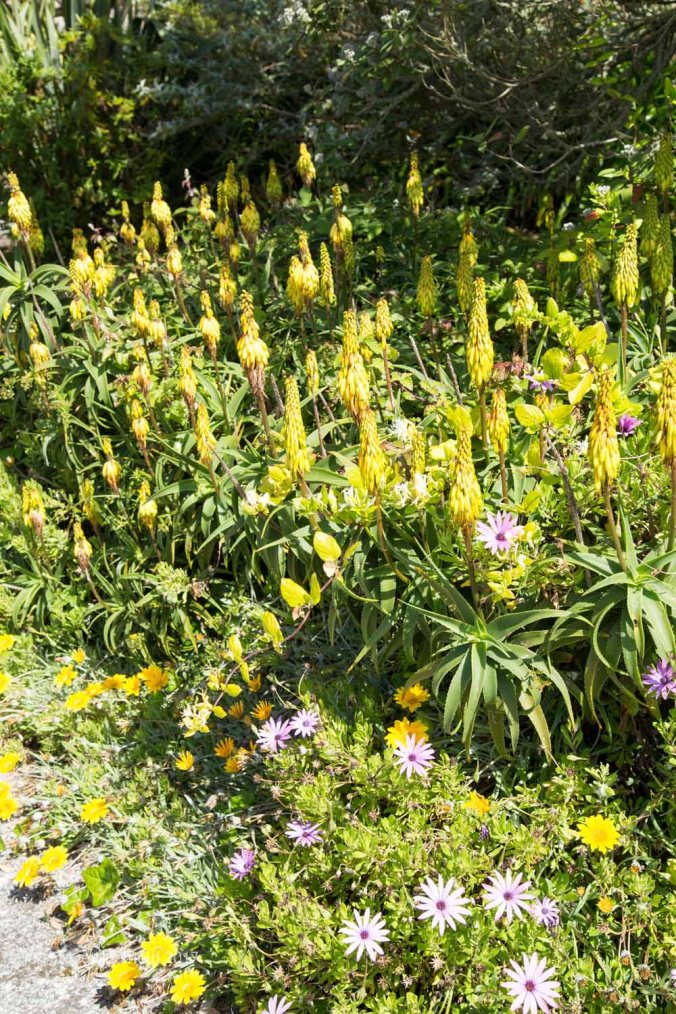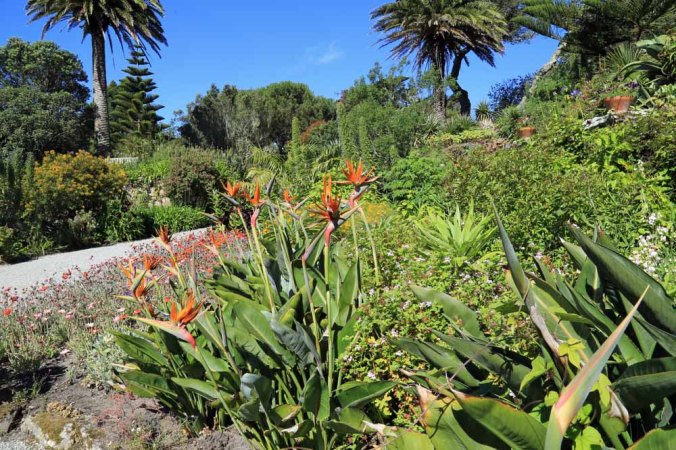It is just over a year that I have been doing this blog. During that time I have done a number of EoMV which centred around one view across the main lawn.
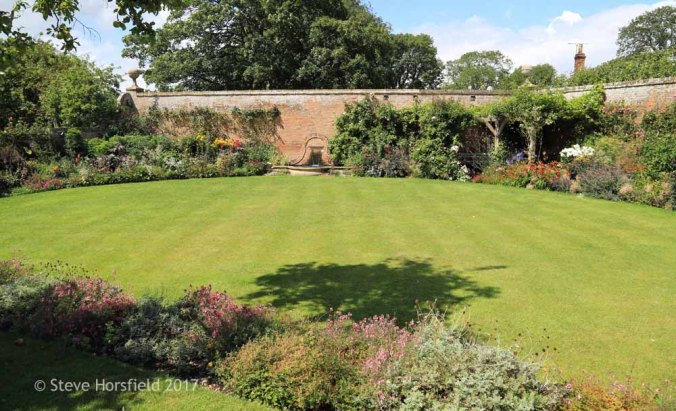
- July 2017
To start with I am going to look back at this view as to how it has changed through the seasons. To do this I have put together a slide show in chronological order.
Its is not perfect and how I wish I had taken this view every month. Never the less it is interesting how the colours change through the year with plants coming into bloom and then dying back and the angle of the sun making the shadows change.
Back to this July. So far the weather has been a tough this year with the first six months being very much drier then usual but then quite a heavy amount of rain in the last couple of weeks. Plants that love rain have suffered from the lack. Dahlias are not as tall as this time last year. However there is much to look at.
 This is the bed to the right of the view above. You can see one of the penalties of going on holiday….the box hedge has not been cut yet!
This is the bed to the right of the view above. You can see one of the penalties of going on holiday….the box hedge has not been cut yet! 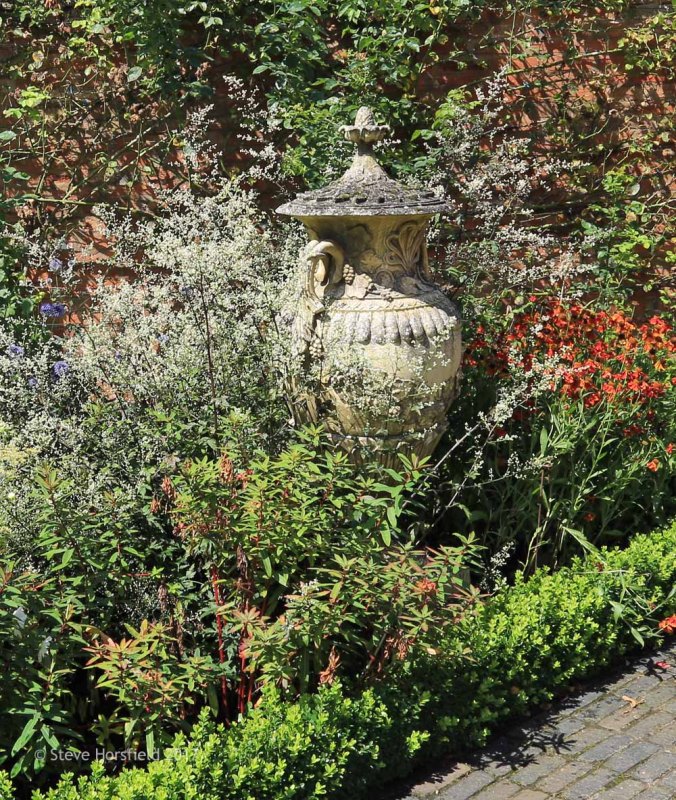 Behind the urn we planted some Artemesia. This is the first year it has looked the part with clouds of little white flowers.
Behind the urn we planted some Artemesia. This is the first year it has looked the part with clouds of little white flowers.
Moving around the beds from the right of the classic view to the left, we have.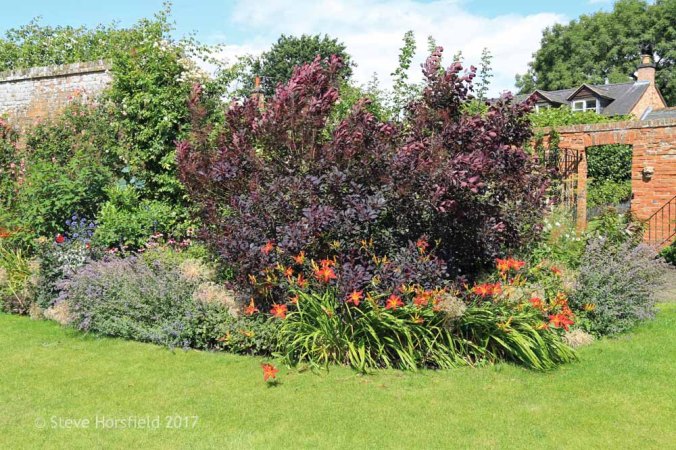 The dry heads of Kniphofia ‘Nancy’s Red’ needs to be removed as they make the border look like autumn. However the day lily Hemerocallis ‘Stafford’ looks good against the Cotinus ‘Nottcutts Variety’.
The dry heads of Kniphofia ‘Nancy’s Red’ needs to be removed as they make the border look like autumn. However the day lily Hemerocallis ‘Stafford’ looks good against the Cotinus ‘Nottcutts Variety’. The Echinops ritro ‘Veitch’s Blue’ beautiful lilac blue balls would look good any where but against the dark foliage of Dahlia Bishop of Auckland they look great. A self set Eryngium giganteum ‘Miss Willmott’s ghost’ was presumably planted by Miss Willmot!
The Echinops ritro ‘Veitch’s Blue’ beautiful lilac blue balls would look good any where but against the dark foliage of Dahlia Bishop of Auckland they look great. A self set Eryngium giganteum ‘Miss Willmott’s ghost’ was presumably planted by Miss Willmot!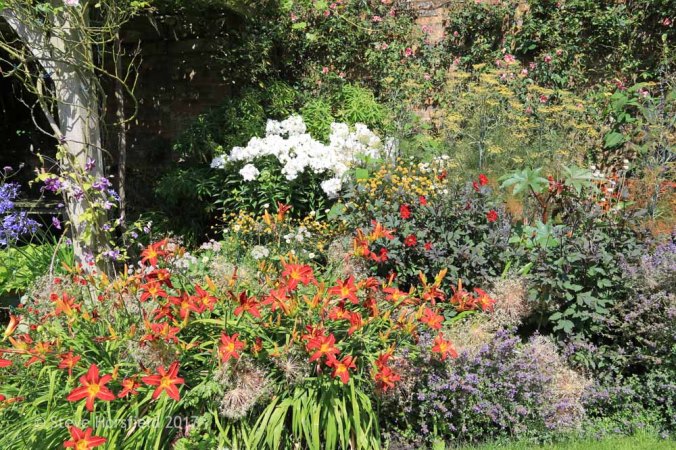 Phloxs have been grown well this year, this one is Phlox paniculata ‘David’.
Phloxs have been grown well this year, this one is Phlox paniculata ‘David’. Agapanthus remind me of Tresco with the red Potentilla ‘Gibson’s Scarlet’ to the front. This Agapanthus is kept in the pot and left outside through the winter but always seems to comeback each year.
Agapanthus remind me of Tresco with the red Potentilla ‘Gibson’s Scarlet’ to the front. This Agapanthus is kept in the pot and left outside through the winter but always seems to comeback each year.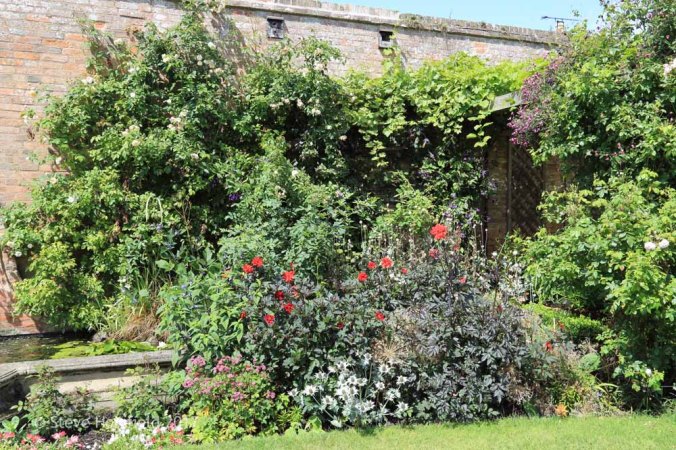 This border is a bit disappointing. The dry weather seems to have resulted in the roses stopping earlier than normal and, as I said above, the dahlias have not been as good this year.
This border is a bit disappointing. The dry weather seems to have resulted in the roses stopping earlier than normal and, as I said above, the dahlias have not been as good this year. The bright yellow flowers are Achillea filipendulina ‘Cloth of Gold’ and should continue to flower through the autumn.
The bright yellow flowers are Achillea filipendulina ‘Cloth of Gold’ and should continue to flower through the autumn.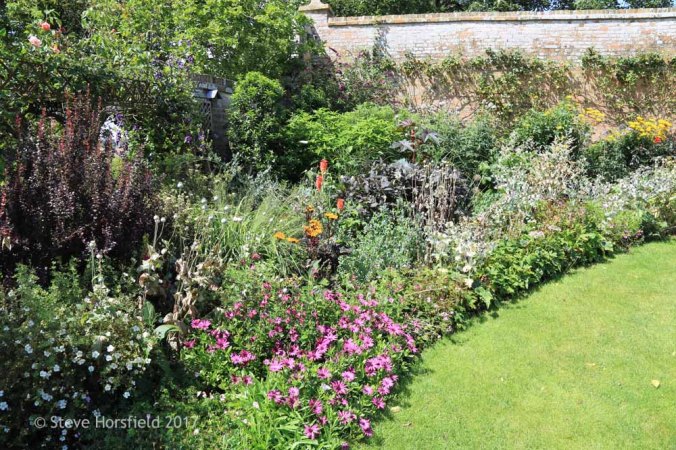 The nice Osteospermum is Osteospermum ‘Tresco hybrids’ but is not hardy in Leicestershire so I will take cuttings shortly.
The nice Osteospermum is Osteospermum ‘Tresco hybrids’ but is not hardy in Leicestershire so I will take cuttings shortly.

Miss Willmott’s ghost and Cloth of Gold
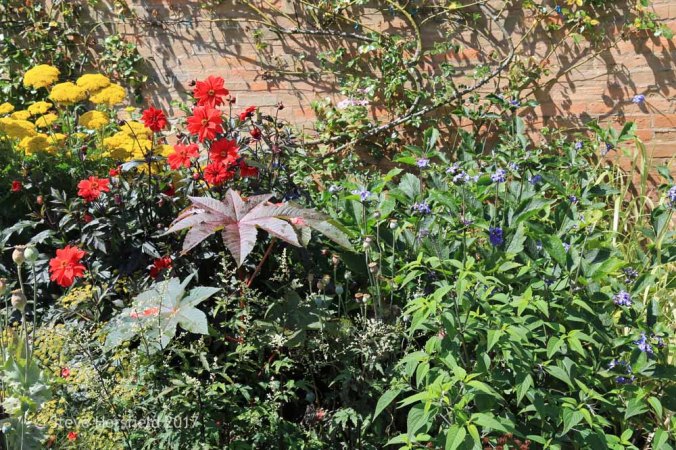 The large leaves are Ricinus communis impala with Clematis ‘Wyevale’, the blue flowers on the right.
The large leaves are Ricinus communis impala with Clematis ‘Wyevale’, the blue flowers on the right.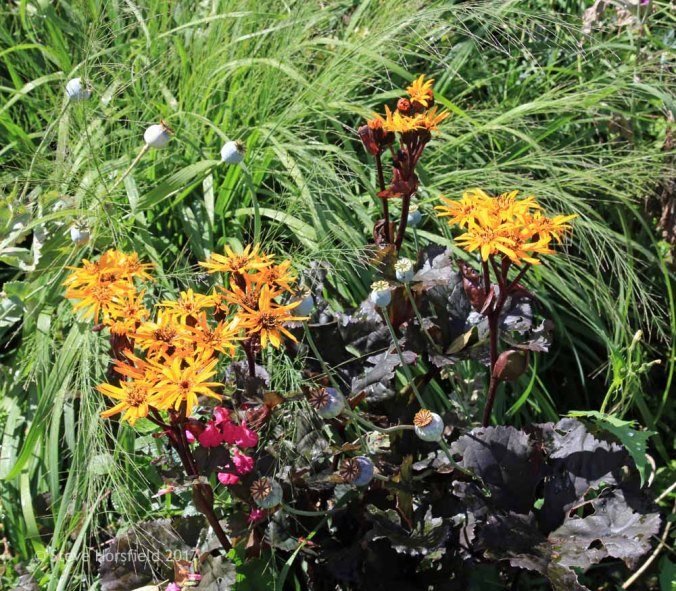 A very striking Ligularia ‘Britt-Marie Crawford’
A very striking Ligularia ‘Britt-Marie Crawford’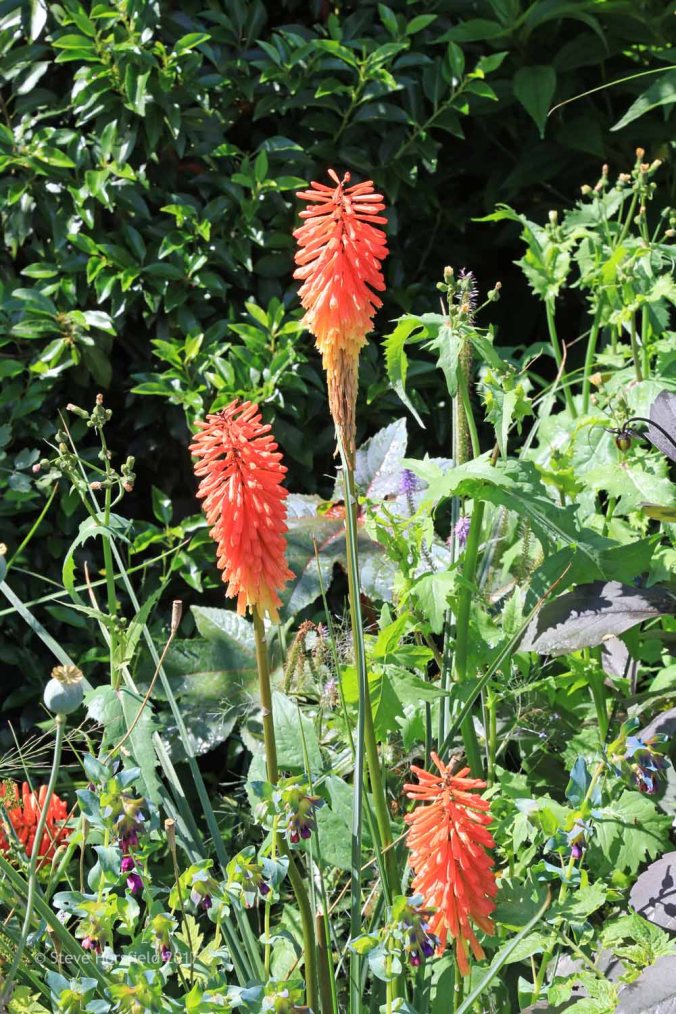 A Kniphofia ‘Nancy’s Red’ with some specimen weeds in the background.
A Kniphofia ‘Nancy’s Red’ with some specimen weeds in the background.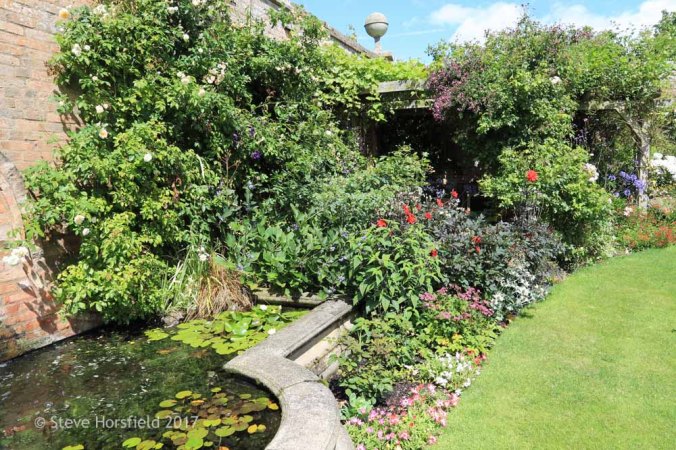 Looking back towards the pergola the border I was disappointed in does not look so bad after all!
Looking back towards the pergola the border I was disappointed in does not look so bad after all!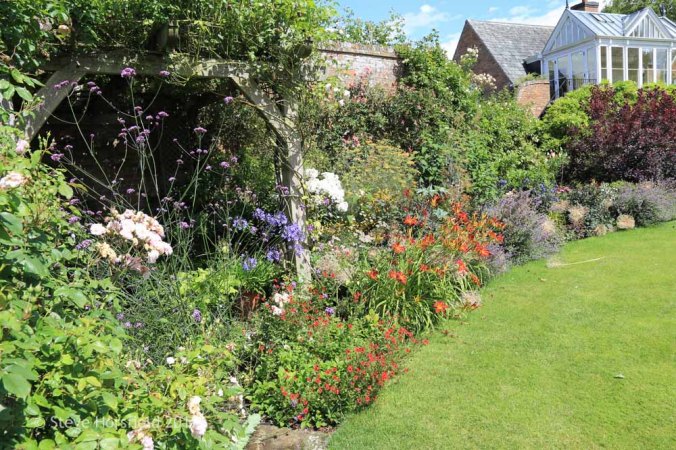 And this view caught my eye.
And this view caught my eye.
Do have a look at Helen The Patient Gardener’s blog where you will find links to other gardens at the end of July. Thank you to Helen for hosting this meme.
The rain has kept us out of the garden this week but there is lots to do, particularly removing the specimen weeds!
| 2017 Gardening Hours | ||
| Week beginning July 22nd | Total 2017 to-date | Average per week |
| 22 | 609 | 20 |
 So many of you were interested in
So many of you were interested in 






 The varied landscape means that there is a huge range of wild flowers everywhere on the island.
The varied landscape means that there is a huge range of wild flowers everywhere on the island. It is more or less possible to walk all over the island and the wild flowers are one of the attractions of these walks.
It is more or less possible to walk all over the island and the wild flowers are one of the attractions of these walks. In places bracken has grown but this is often cut back to enable the wild flowers and wildlife to flourish.
In places bracken has grown but this is often cut back to enable the wild flowers and wildlife to flourish.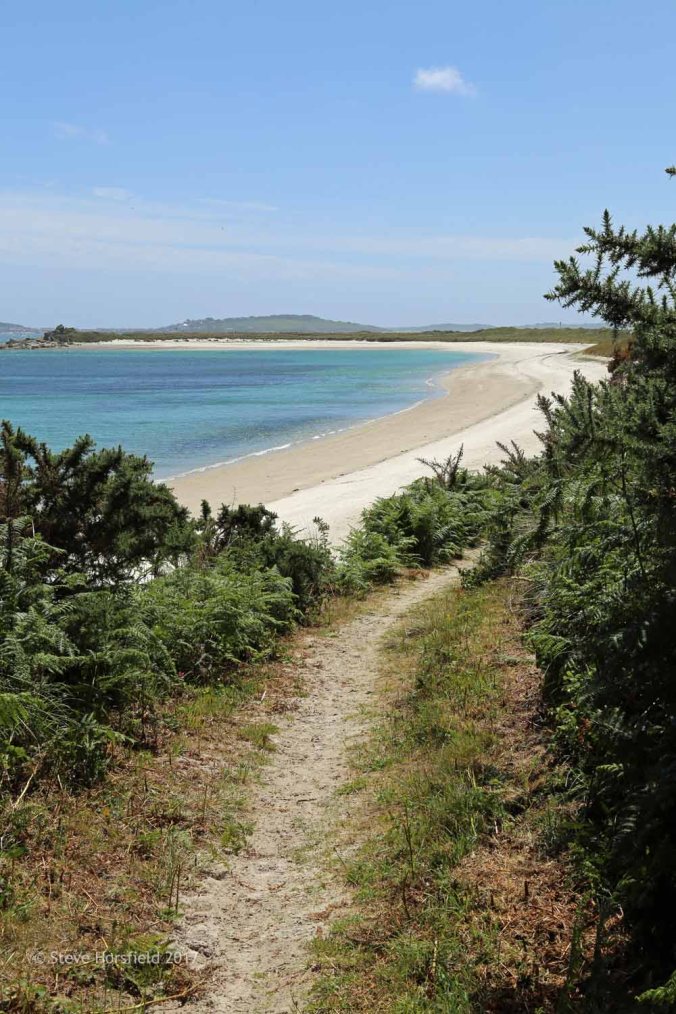
 In many paces Agapanthus and Yarrow have colonised the sand dunes creating natural prairie like planting.
In many paces Agapanthus and Yarrow have colonised the sand dunes creating natural prairie like planting.




















































































 As well as the wild flowers many of the cottages have fantastic gardens.
As well as the wild flowers many of the cottages have fantastic gardens. Some impressive flowers for any front garden.
Some impressive flowers for any front garden. What a garden wall should look like!
What a garden wall should look like!

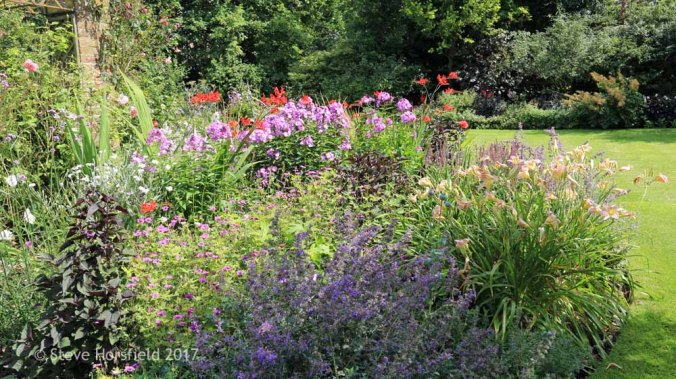 The weather this year has been a challenge. It has been dry and hot and we seem to be advancing into that gap between Summer and Autumn even so it is only the end of July. Many plants are dry and crispy and having been away for a couple of weeks we have not had time to remove those specimen weeds that always seem to grow the best! However, there is still much to show this month.
The weather this year has been a challenge. It has been dry and hot and we seem to be advancing into that gap between Summer and Autumn even so it is only the end of July. Many plants are dry and crispy and having been away for a couple of weeks we have not had time to remove those specimen weeds that always seem to grow the best! However, there is still much to show this month.



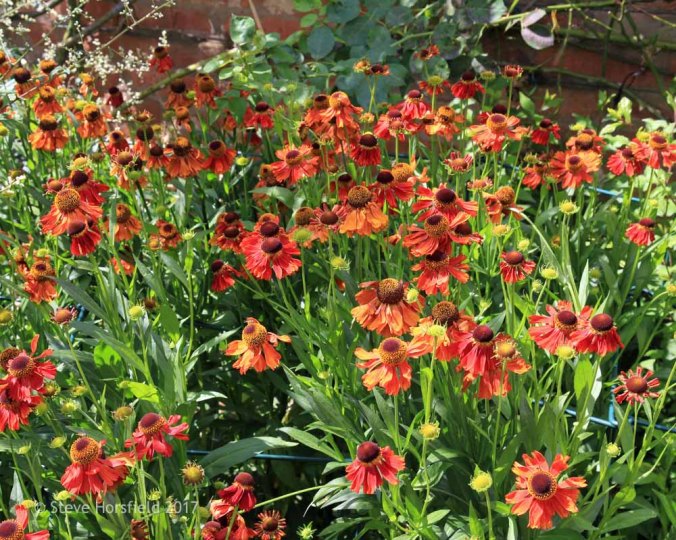 Helenium ‘Moerheim Beauty’ looking great as always.
Helenium ‘Moerheim Beauty’ looking great as always.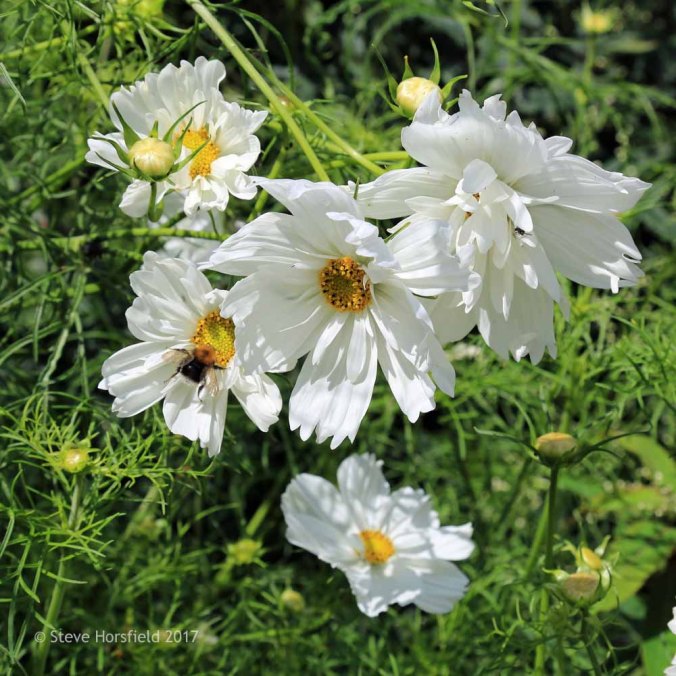 Cosmos bipinnatus ‘Purity’
Cosmos bipinnatus ‘Purity’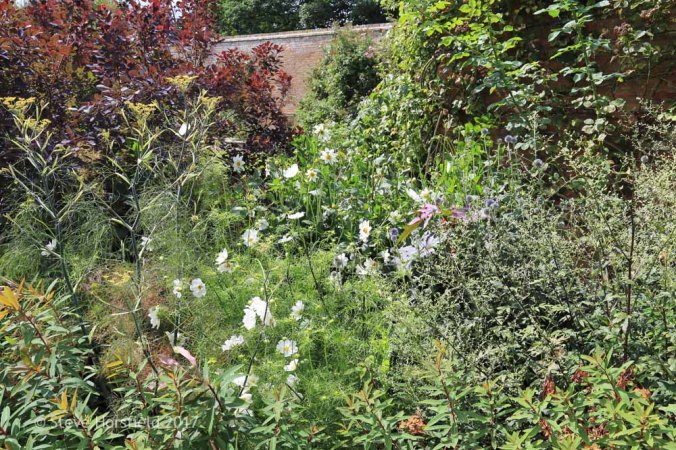 almost lost in the border with other perennials.
almost lost in the border with other perennials. Another day lily, Hemerocallis ‘Stafford’.
Another day lily, Hemerocallis ‘Stafford’.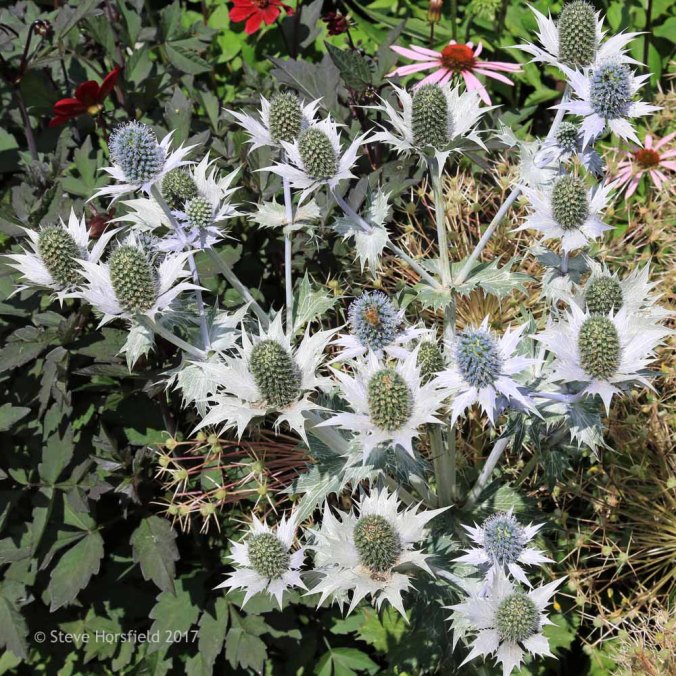 A favorite with the bees and looking at its best Eryngium giganteum ‘Miss Willmott’s ghost’
A favorite with the bees and looking at its best Eryngium giganteum ‘Miss Willmott’s ghost’ The blue globes of Echinops ritro ‘Veitch’s Blue’. This magnificent variety produces stiff silvery stems with dark green, silver-backed thistle-like leaves which terminate in brilliant dark, vivid blue globes the size of a spiky golf ball.
The blue globes of Echinops ritro ‘Veitch’s Blue’. This magnificent variety produces stiff silvery stems with dark green, silver-backed thistle-like leaves which terminate in brilliant dark, vivid blue globes the size of a spiky golf ball.

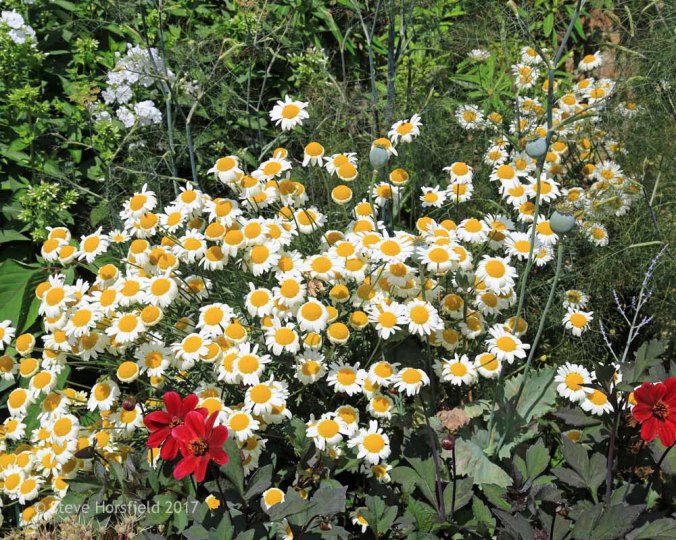 Anthemis tinctoria ‘Sauce Hollandise’ need supporting as it grows but gives a real splash of colour.
Anthemis tinctoria ‘Sauce Hollandise’ need supporting as it grows but gives a real splash of colour.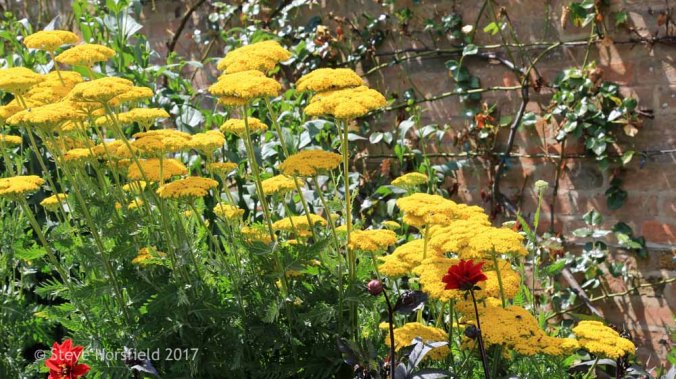 One for the back of the border. Achillea filipendulina ‘Cloth of Gold’ will grow to six feet.
One for the back of the border. Achillea filipendulina ‘Cloth of Gold’ will grow to six feet.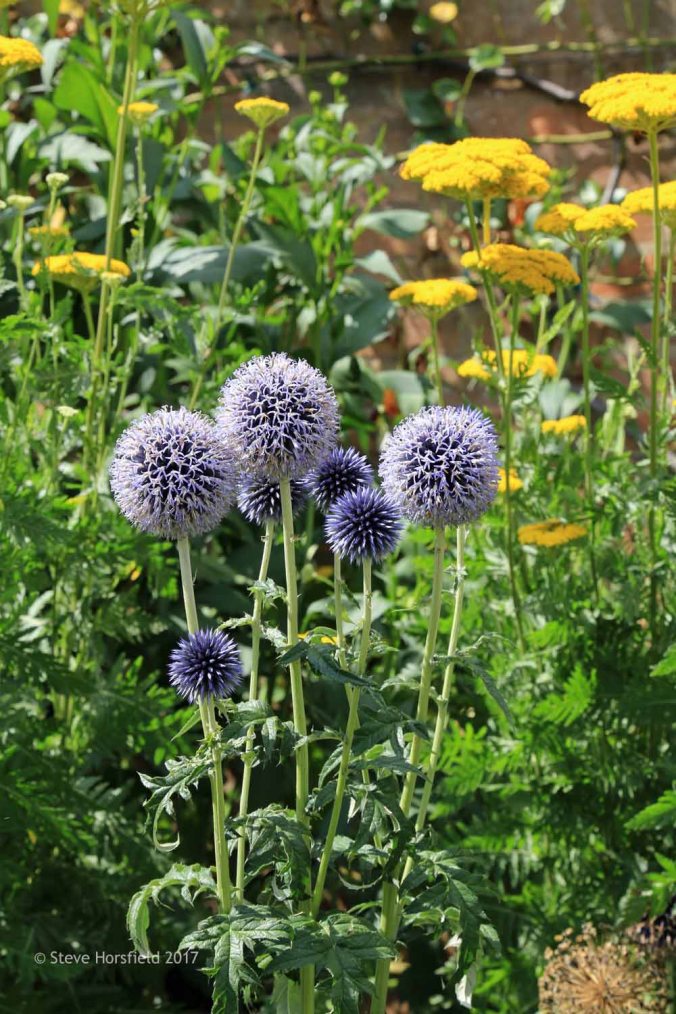 Another echinops, Echinops Humilis ‘Taplow Blue’ also grows to around six feet.
Another echinops, Echinops Humilis ‘Taplow Blue’ also grows to around six feet.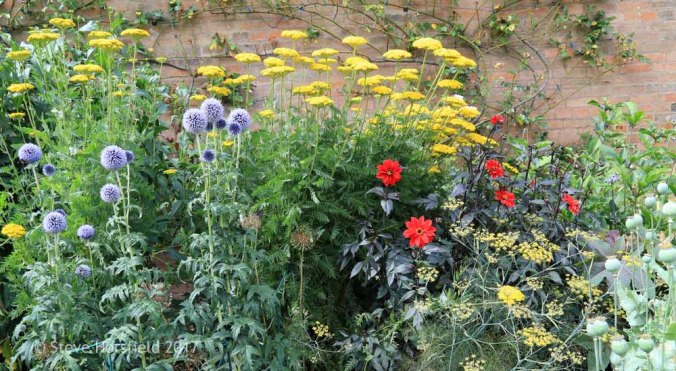 And here they are together with Dahlia ‘Bishop of Llandaff’.
And here they are together with Dahlia ‘Bishop of Llandaff’.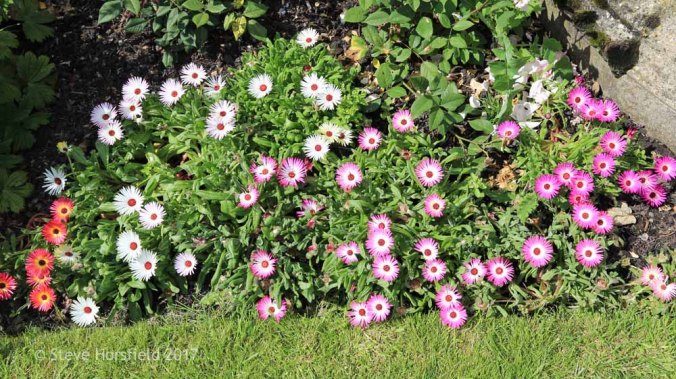 A useful gap filler for the front of the border is Mesembryanthemum and it is easy to grow from seed.
A useful gap filler for the front of the border is Mesembryanthemum and it is easy to grow from seed. Potentilla ‘Gibson’s Scarlet’ another useful plant for the front of the border.
Potentilla ‘Gibson’s Scarlet’ another useful plant for the front of the border. One of my favorite dahlias, Dahlia Bishop of Auckland.
One of my favorite dahlias, Dahlia Bishop of Auckland. 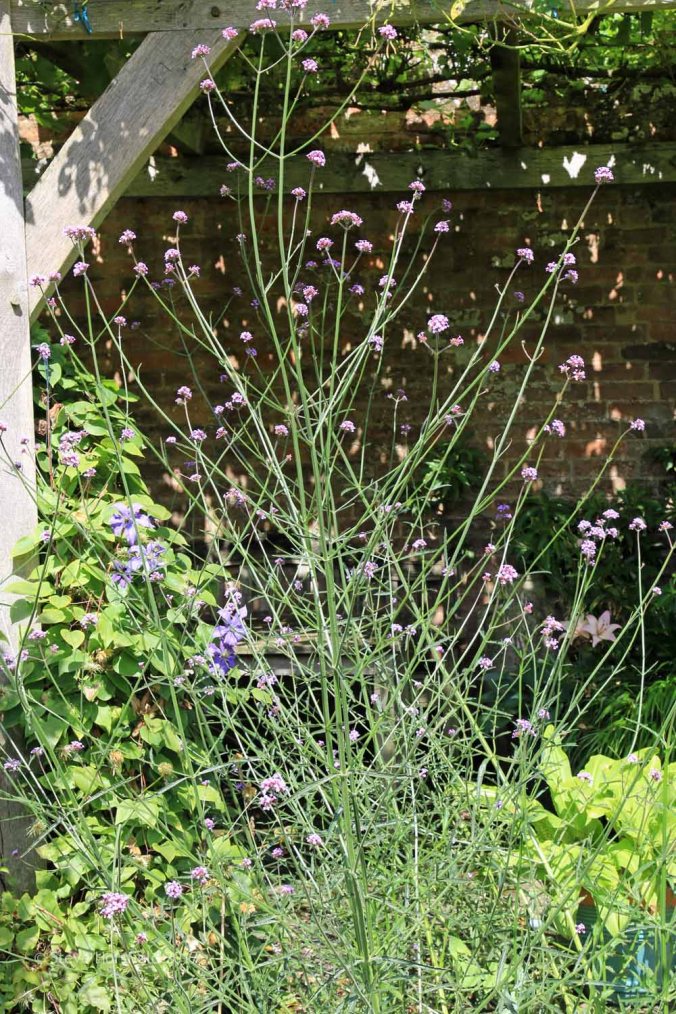 Always unexpected, Verbena bonariensis plants itself where it wants to grow but it is always a delight.
Always unexpected, Verbena bonariensis plants itself where it wants to grow but it is always a delight.

 Day lily, Hemerocallis ‘Lemon Bells’
Day lily, Hemerocallis ‘Lemon Bells’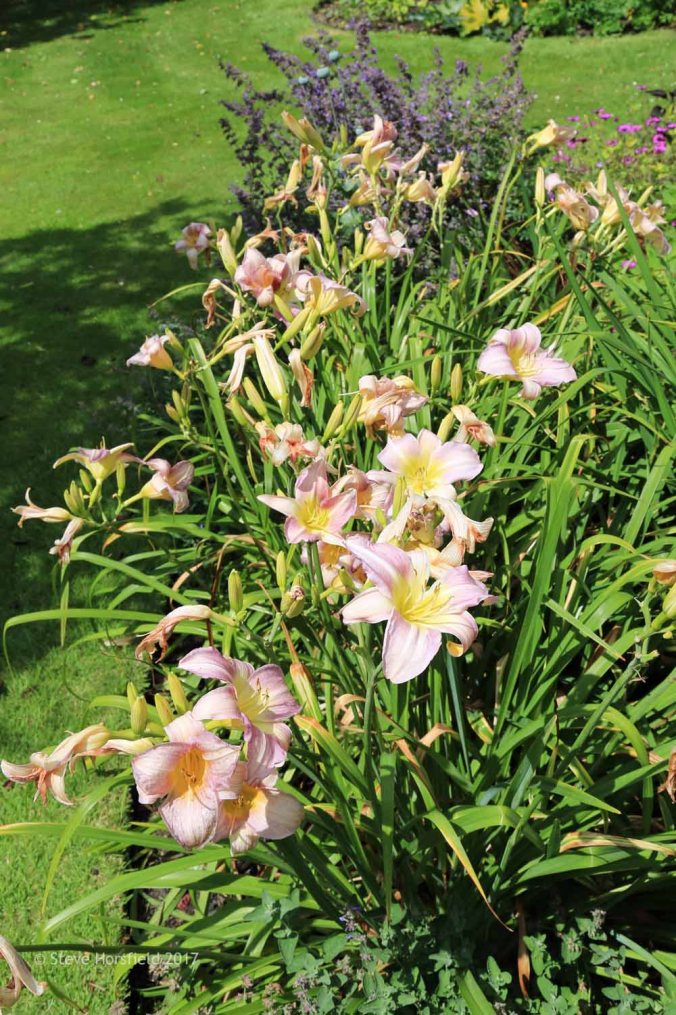 and in the same border Hemerocallis ‘Catherine Woodbery’
and in the same border Hemerocallis ‘Catherine Woodbery’

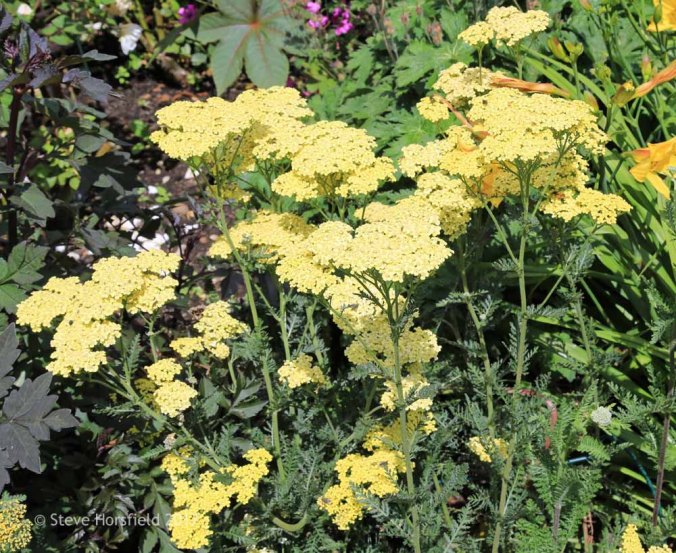 Achillea ‘Credo’ was planted in 2016 and is now looking much stronger.
Achillea ‘Credo’ was planted in 2016 and is now looking much stronger. The bottom of the garden with Stipa gigantea and
The bottom of the garden with Stipa gigantea and Echinacea.
Echinacea.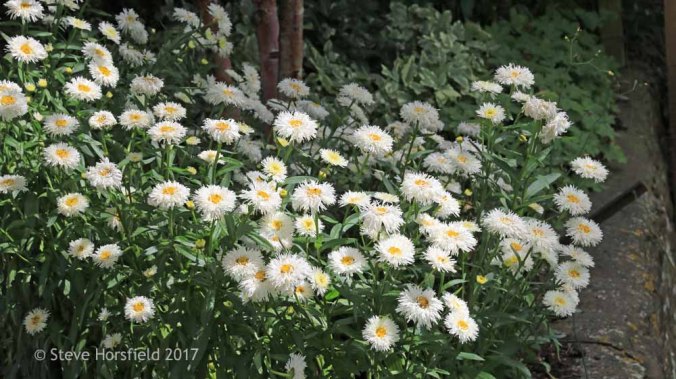 Leucanthemum ‘Goldrausch’ a good strong Shasta Daisy.
Leucanthemum ‘Goldrausch’ a good strong Shasta Daisy.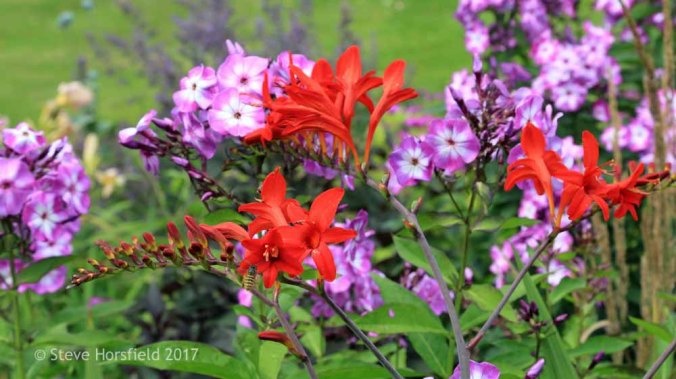 Crocosmia ‘Lucifer’ with
Crocosmia ‘Lucifer’ with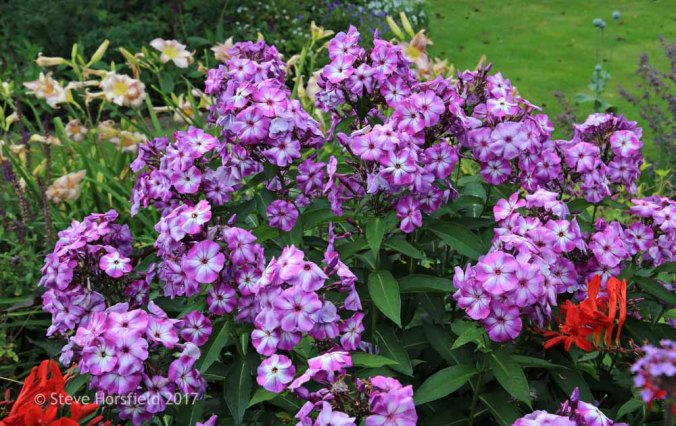 Phlox paniculata Uspekh in the background.
Phlox paniculata Uspekh in the background.

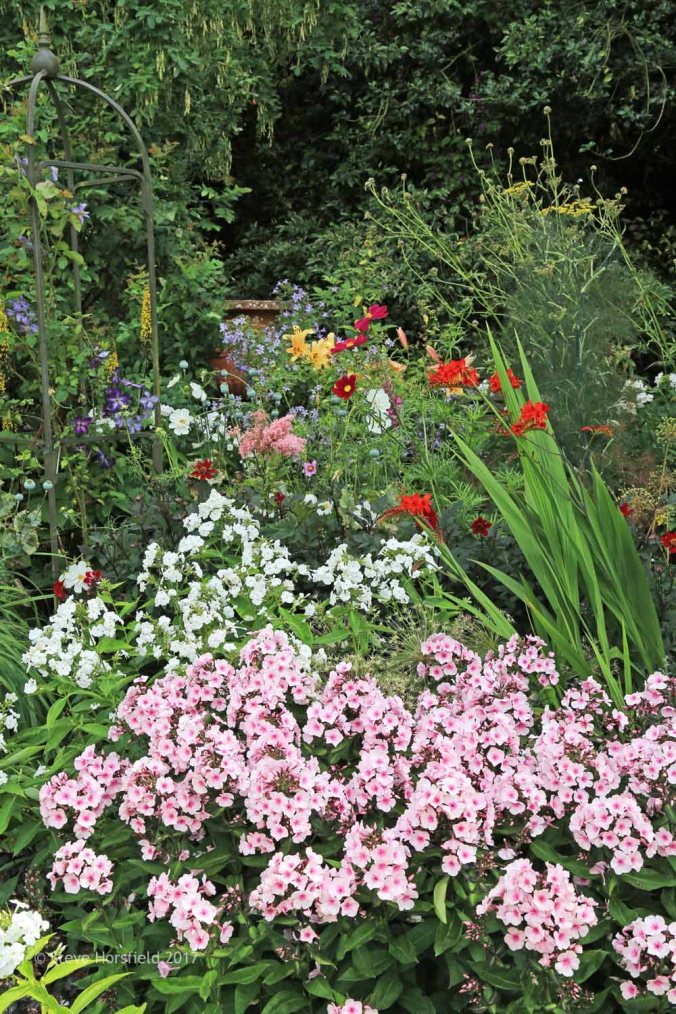 Phoxs have done particularly well this year. In the foreground is Phlox paniculata ‘Bright Eyes’.
Phoxs have done particularly well this year. In the foreground is Phlox paniculata ‘Bright Eyes’. Lavandula augustifolia ‘Hidcote’ is always hard to keep looking good and not woody.
Lavandula augustifolia ‘Hidcote’ is always hard to keep looking good and not woody.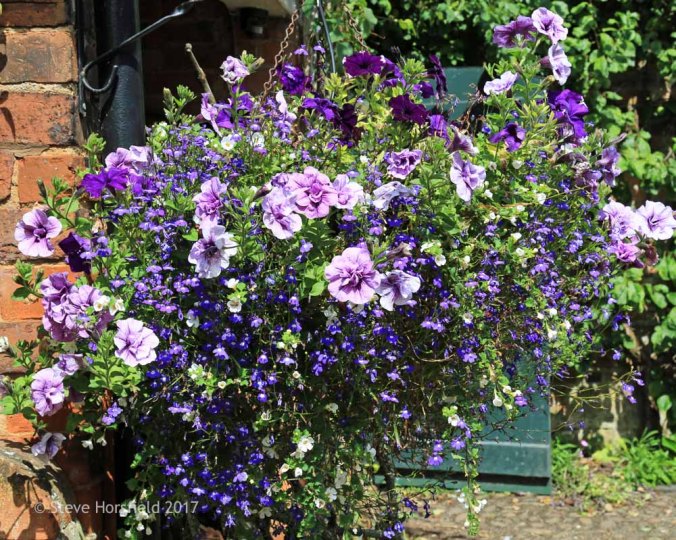 We only have one hanging basket and here it is!
We only have one hanging basket and here it is!

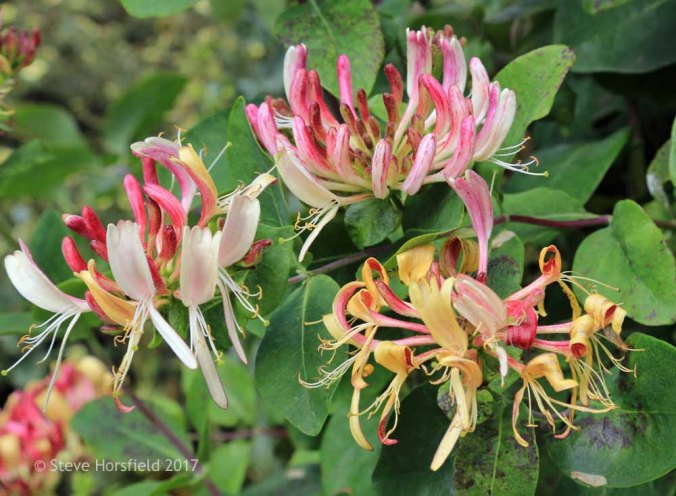 A great honeysuckle which we took as a cutting from another garden.
A great honeysuckle which we took as a cutting from another garden. Rosa ‘Meg’ a beautiful climbing rose that was in the garden 23 years ago when we brought the house and garden.
Rosa ‘Meg’ a beautiful climbing rose that was in the garden 23 years ago when we brought the house and garden.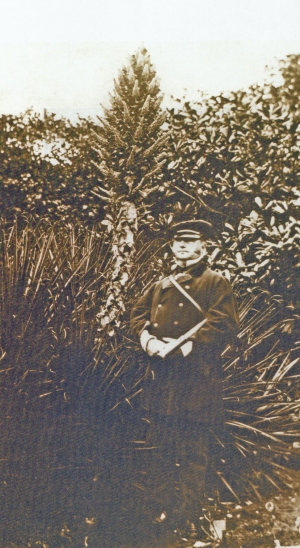

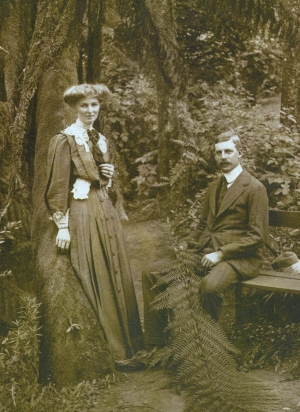
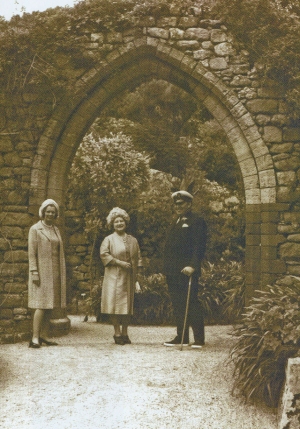
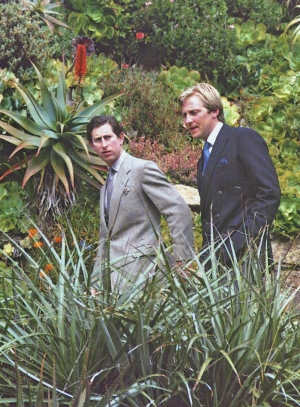
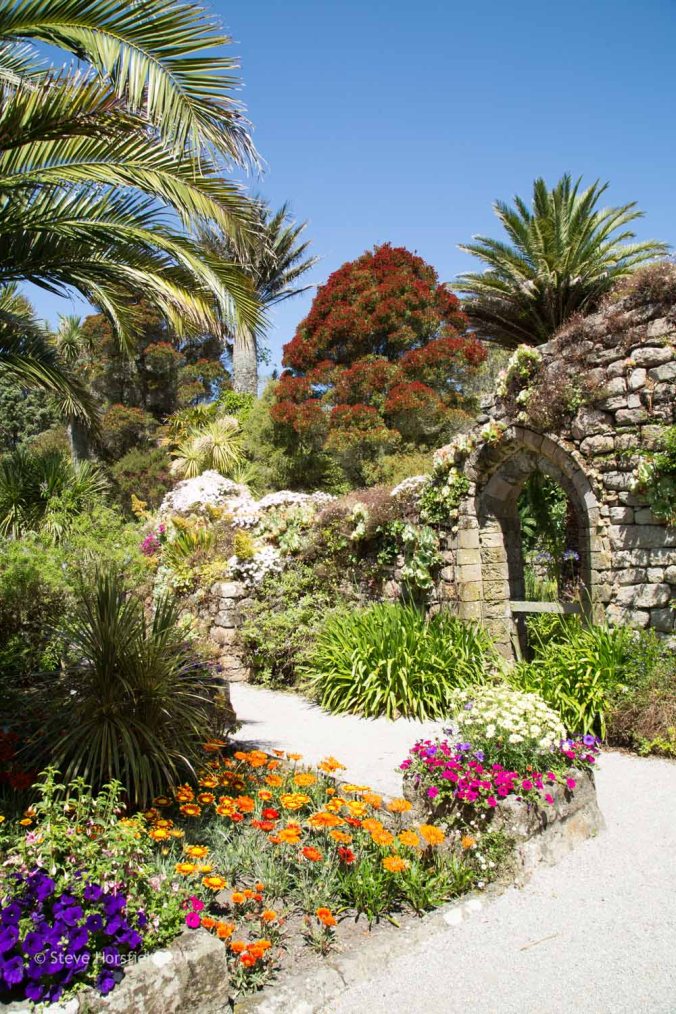
 The garden is terraced against a sheltered south facing slope. This is the middle terrace. Each terrace effectively has its own micro climate getting drier as you go up enabling different ranges of plants at each level.
The garden is terraced against a sheltered south facing slope. This is the middle terrace. Each terrace effectively has its own micro climate getting drier as you go up enabling different ranges of plants at each level.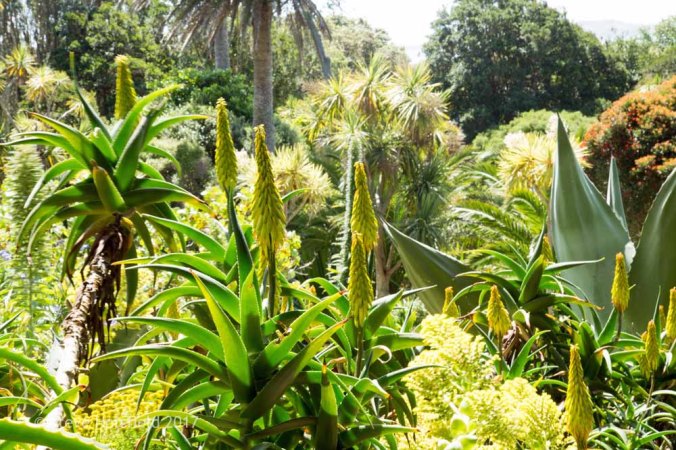 Do not expect formal planting schemes or manicured borders. The garden is really about the plants.
Do not expect formal planting schemes or manicured borders. The garden is really about the plants.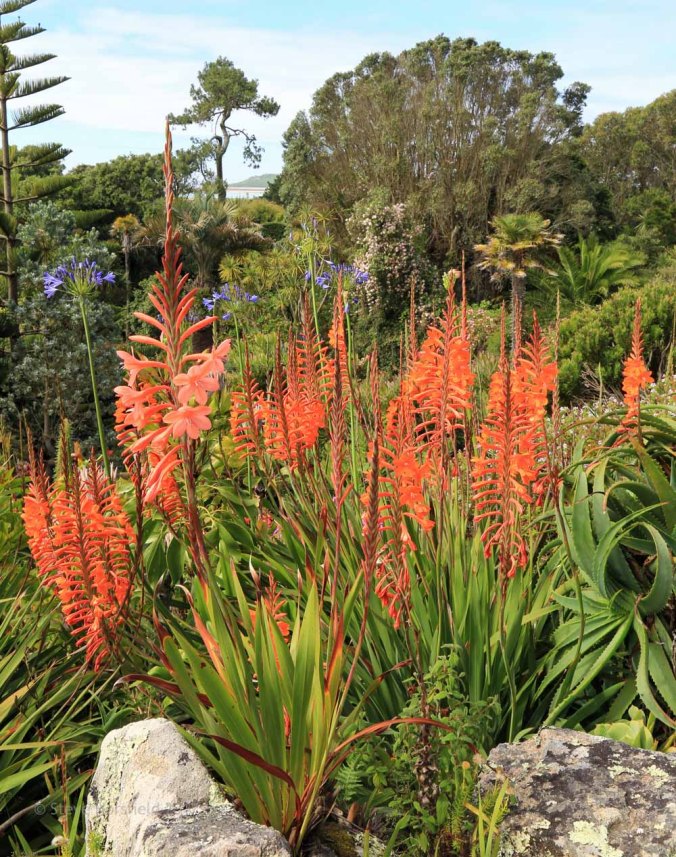

 In the lower parts of the gardens tree ferns from New Zealand and Australia flourish.
In the lower parts of the gardens tree ferns from New Zealand and Australia flourish.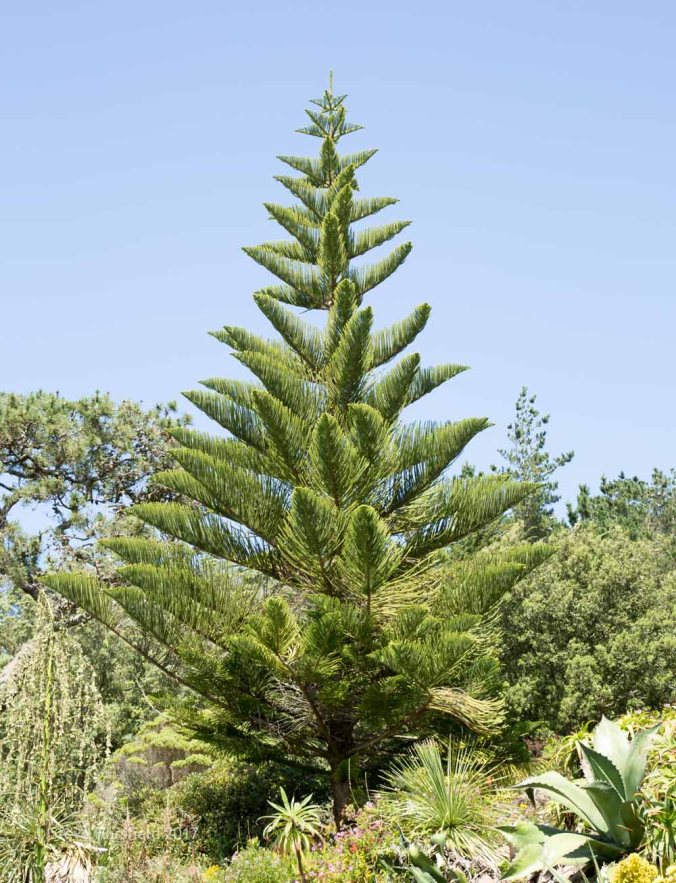
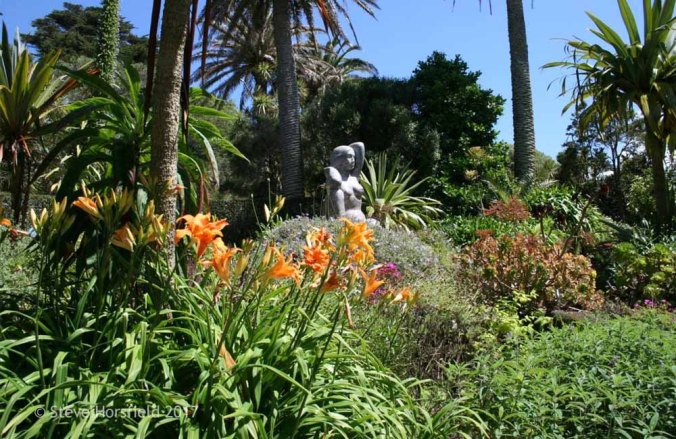 ‘Gia’ by sculptor David Wynne and made from a block of multi-coloured South African marble.
‘Gia’ by sculptor David Wynne and made from a block of multi-coloured South African marble.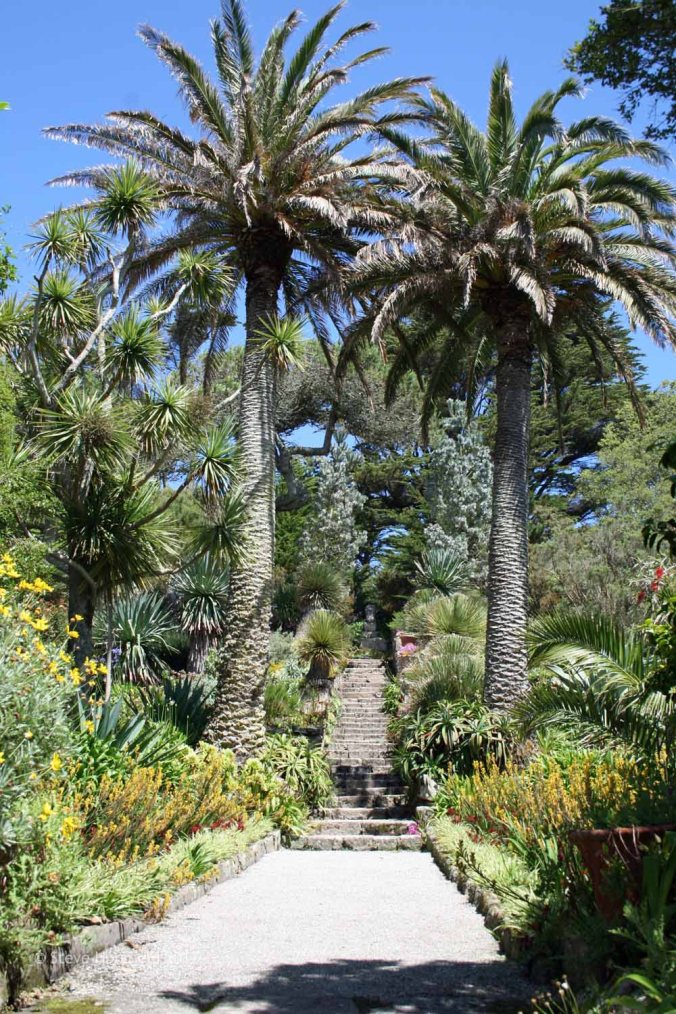
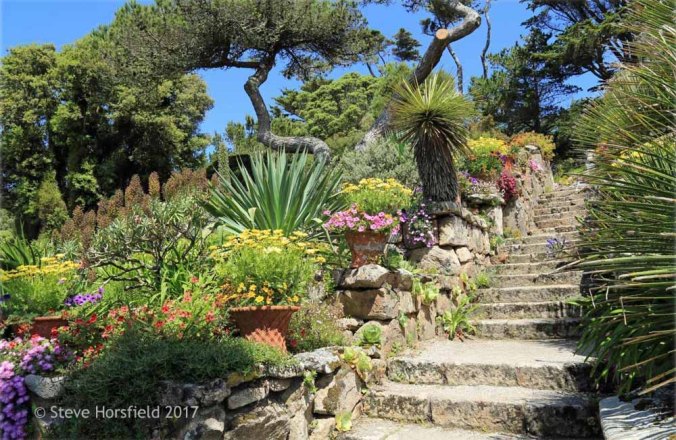 Higher up the Neptune Steps.
Higher up the Neptune Steps.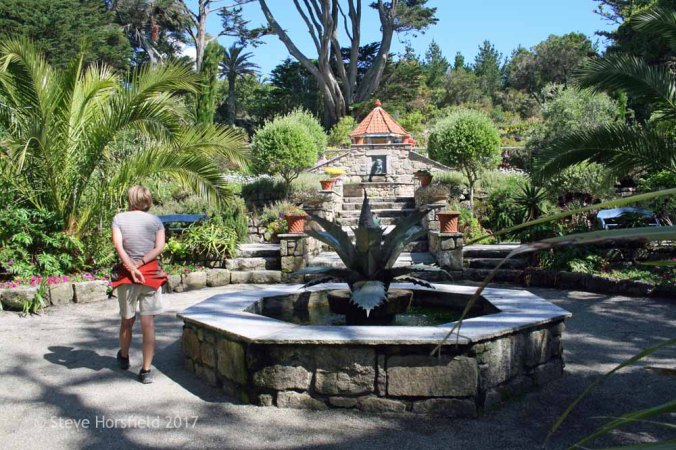 The “Mediterranean Garden” with a water feature, based on an Agave, which was created by Cornish artist Tom Leaper in 1996. This is probably the most ‘designed’ part of the garden.
The “Mediterranean Garden” with a water feature, based on an Agave, which was created by Cornish artist Tom Leaper in 1996. This is probably the most ‘designed’ part of the garden.